Five Mississippi Delta tamale joints, on the way to find the blues
March 19, 2019
The Mississippi Delta, that great fertile valley between the Mississippi and Yazoo Rivers, is flooding, though it hasn’t made national news. The water is spreading into the long, flat fields alongside Highway 61, filling up ground where crops should be planted and houses where people should live. Highway 61 is famous for the musicians who have grown up along it, from New Orleans to Chicago, but now it is an asphalt strip, winding just above the flooding claimed by the river, reminding us that in the end, the river will claim all things. I drove that ribbon this weekend, in search of some truth about the Delta, about where American music and food and culture come from, and why it remains one of the poorest parts of the country. That story was framed in five servings of Delta Hot Tamales over four days. Mississippi Delta tamales are not like the kind you get at a Tex-Mex restaurant. They are boiled, made with cornmeal and spiced beef, wrapped in corn shucks and served with hot sauce. Their origin is disputed: some say they are native to the Delta, from the days of the Choctaw and their ancestors; others say they came with the waves of migrants who worked the field. The best tamales have a long heat that sits with you for a while, though the kind of spice can vary. They are like the Blues, designed as something to take out into the hot fields of Mississippi, served in the hottest parts of the day to keep the worst parts of the backbreaking job at bay.
The first stop on our little tour was just outside of the Delta in Jackson, Mississippi, at the Big Apple Inn. The very location is telling, because Farish Street in Jackson is practically a ghost town. It’s clear it was once a bustling neighborhood, full of life and energy. The stone streets mark it as an entertainment district, where you could imagine music and foot traffic lazily moving across the street, but now weeds grow through windows piled with junk, and the Big Apple Inn is easy to miss, tucked away next to an empty storefront.
The entryway to the Big Apple Inn is narrow — more than halfway filled by a working, sizzling grill. If our visit (on a Friday afternoon) is any indication, then it is always also filled by a line of people pushed up against the wall, waiting for their food. This place started as a traveling tamale cart and evolved into the restaurant that is here today, though it remains the kind of place where you grab food to go and where the only drinks served come out of a vending machine in the back. Paint chips peel from the ceiling, yellowed electric lights are dim or completely out and the back of the restaurant is in disrepair. The tamales, I have to admit, were less than perfect. They were a bit mealy, and the beef was almost an afterthought, less than perfectly wrapped by the cornmeal husk. I found myself wanting hot sauce, and realized I was probably expected to bring it myself. But there’s more to the Big Apple than just the tamales.
Their classic dish is the pig’s ear sandwich, which is exactly what it sounds like. There’s nothing like it in the world: a pig’s ear served up hot between a layer of pasta and two buns. I could only eat a quarter of it, and it didn’t exactly sit well with me for the rest of the day. I’ve been told it’s an acquired taste. In fact, talking to the patrons who have been coming to the Big Apple Inn their entire lives, it’s the kind of taste that really means something, because for a long time the pig’s ear sandwich was served free to kids who came down to the restaurant to do their homework, many of whom didn’t have a chance to eat much else during the day. Spend just a few minutes in the Big Apple Inn, as I learned, and you’ll come away realizing that it’s more than a tamale joint — it’s a point of pride for a community that has seen economic downturn and downright failure. Jackson is not a prosperous city, but Farish Street has their own delicacy in the pig’s ear sandwich, and it means more than what its name suggests.
It took another day to get to the next tamale spot, but we found one right on the edge of the Delta. Yazoo City, Mississippi, named for the other river that creates the Delta, calls itself the “Gateway to the Delta,” and you can tell why when you drive into town. Coming out of the East Mississippi hills, the land suddenly drops away into the long, flat plain of the Delta, and you can see this place open up, low and flat and somehow different from any other place in the South, or in the United States for that matter. Yazoo City, too, is mostly empty. Its downtown is painted in pastel colors, like a seaside village, which only adds to the feeling that you are standing in a movie set (in fact, parts of “O Brother, Where Art Thou?” were filmed there), or among the last remnants of a once mighty civilization, abandoned a generation ago. Ubon’s is just out of town, back up in the hills beyond the Delta.
Ubon’s is more modern than the Big Apple Inn, less of a sizzling grill and more of a sit-down barbeque joint, but the walls are marked in marker and pen with messages from visitors from across the country (the best ones said “Roll Tide!”). Their tamales are more typical and very flavorful, with a long-hot burn in the center of your mouth. Again, however, Ubon’s upstaged their tamales with some other dish. Without any reservations, I can say that their baked beans are the best I’ve ever had, tangy and slow-cooked and full of barbeque (something that is also quite delicious!).
It’s what came after Ubon’s that made Yazoo County, Mississippi special, though. On the outskirts of Yazoo City is a little community called Bentonia, home of the Blue Front Cafe.
The Blue Front Cafe is the longest operating “juke joint” in Mississippi, and the place where the school of blues called the Bentonia Blues was born. There weren’t any blues being played that Saturday night, nor any tamales being served, but we did get to talk to owner and legendary bluesman Jimmy “Duck” Holmes, the master of those Bentonia Blues. We asked him where we might find good blues and good tamales in the Delta, and he told us to drive to Clarksdale. “That’s where I hear the Crossroads is,” I said. “Where Robert Johnson sold his soul to the Devil to learn to play the blues. Is that the real place where it happened?” Jimmy didn’t believe that story, not like I do, at least, and said it wasn’t any more true than the Wicked Witch of Yazoo City. He told us the story — of how she burned down the town as revenge for her persecution in 1904 — and so we drove down to her grave, the long-link chains still surrounding it in an attempt to keep her spirit in the ground. The city cemetery stretched out in all directions, and by the time we found our way out, the gate to the street was locked, closed, the sign taunting us with its “Open from Dawn to Dusk” warning. That old blues standard “Hoochie Coochie Man,” all about a man born in the Delta with the blues and the Devil in his veins played on the radio. For a moment, before we found the second gate, it seemed like we might spend the night in the cemetery, with the Witch of Yazoo City and the minor-chord blues of Jimmy “Duck” Holmes all night. For a moment, I know, I got a chill in my veins.
That’s what the Delta will do to you.
The next morning, things didn’t seem so scary, and we made our way to Vicksburg, home of the Hoochie Coochie Man, and then to Greenville, Mississippi, a town where there really is nothing going on. By the late afternoon, the only thing to do was drive around Greenville, this part of the Delta that doesn’t feel like big flat open plains but instead like industry and modernity moved in and then abandoned the place, leaving decaying streets and urban sprawl. The little mall needed a pressure washing badly. We stopped for an afternoon snack, still on our tamale quest, at Hot Tamale Heaven and Grille.
What sets Hot Tamale Heaven apart is how it’s set up like a quick-service restaurant, a big fast-food chain with a drive-thru and a clean, cold, sit-down space. There’s just two locations, though — both in Greenville. The tamales feel like a quick-service tamale; most of the flavor relies on Texas Pete hot sauce in little packets. It was cold, in more ways than one. It was like the urban sprawl of Greenville had made its way into the heart of the Delta and corrupted even the Tamales. This is real Delta, right on the banks of the Mississippi, as far westward as you can go before it isn’t Mississippi anymore, the end of this part of the world, the place where the blues was born, and still lives.
The day was saved by Doe’s Eat Place. Like a lot of things in the Delta, it looks crummy on the outside, just a little shack at the end of a street, but when you push open the door, you find something really special. Inside is the kitchen, and someone will escort you past the ovens and grills and boxes stacked high with supplies into the backroom, where plates sit on a plastic tablecloth. What they don’t tell you when you arrive, is that Doe’s is actually an upscale restaurant, known all over the world for its menu (unwritten, and given at double-speed by your server when you sit at the table).
Doe’s serves incredible steaks, and delicious spaghetti and meatballs drawn from their past as a Sicilian Grocery Store. Their tamales are unique, bound in wax paper instead of corn shucks, and they hold together more tightly than many other tamales. They were also served with Louisiana Hot Sauce, a personal favorite, which made them all the more delicious.
Doe’s screamed the Delta, an institution almost a hundred years old, still doing things the old way, tamales and steak and, cunningly, secretly, also a place where famous chefs and food critics arrive. But it wasn’t our last stop. See, all roads in the Delta lead to the Crossroads, eventually.
The legend is that the blues wasn’t really the blues until Robert Johnson, a young man in search of himself, found his way to Clarksdale, home of the new sound called the blues. He had left his home a halfway decent harmonica player and a terrible guitarist, but when he returned, he was so good that he cut 29 songs that would go on to be some of the most influential in history. They say he sold his soul at the Crossroads, just to learn to play guitar.
It’s a story that gives the blues what it needs. It’s a story that adds menace, and subversion, of the racism and poverty of the 20th century, and frankly, of today. The blues fight for justice, it says — justice powered by the outlaw and fighter, the worker and the laborer, the man who pours his heart and soul into the blues. They are more powerful than even the Witch of Yazoo City, and their power flows from the intersection of Highway 61 and Highway 49, right there in the city where so many blues musicians got their start, marked by a tall blue sculpture, right at the supposed spot where Johnson made his deal.
Abe’s Bar-B-Q is one of those old, low-ceilinged barbeque joints where you know the sauce will be great and the pork a little tough, where the coffee is served in styrofoam cups and the 1920s logo is a little menacing. It’s been there since before Robert Johnson, since the very first moments of the blues, and that makes the food feel somehow different. The tamales are saucier at Abe’s, less dry, and the coleslaw adds just enough crunch and sweet coldness. You can’t stop eating them, one after the other, even though their spicing is very dependent on red pepper and leaves a little to be desired.
What makes Abe’s special is that you can imagine the Devil, just as he appeared to Robert Johnson, sitting at the barstools along the counter, sipping his coffee out of a styrofoam cup, all menace and pent-up energy.
After four days and a trip across the Delta, after seeing the flooding and the empty buildings, pig’s ear sandwiches and grave of the Wicked Witch of Yazoo City, after listening to the blues and the rumble of Highway 61, you feel why there’s power in the Delta. It has long been a place where good and bad have come together, a magnification of the South, everything all tumbled up and wrapped in water and work and sweat, all wrapped in corn husks and magic. You sit at Abe’s and look out at the Crossroads, and you feel a sense of magic. After that we had to leave and come back to Tuscaloosa. Tamales and blues and the Delta all ended at the Crossroads, and all came together at Abe’s Bar-B-Q.
The Delta is flooding. Maybe it has always been flooding in the Delta, maybe it has always been too much — too much good, too much bad and too much water.



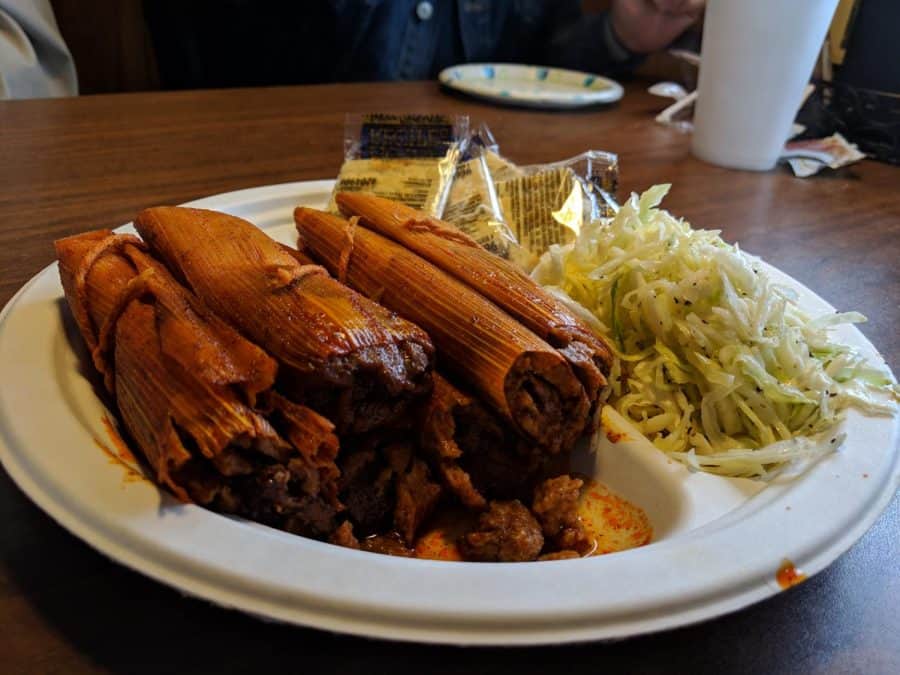
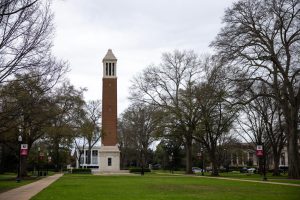
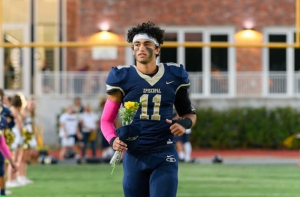

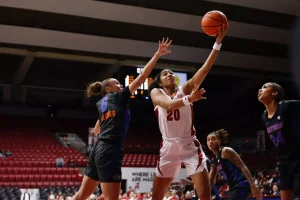
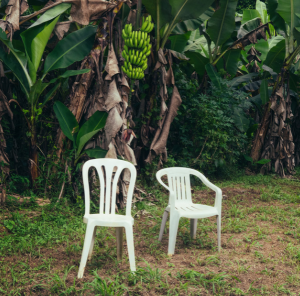

![NEWS | The University of Alabama issued guidelines for faculty that align with the passage of SB129, a controversial Alabama state law that, among other things, restricts DEI policies and prohibits endorsements of “divisive concepts.” These new guidelines highlight potential interactions with “divisive concepts” and formalize a new list of do’s and don’ts for classroom discussion and instruction.
From the start of the fall semester, SB129’s impact could be felt across campus, from the changes to funding for student organizations to the shuttering of the Safe Zone and offices of the Black Student Union. These outcomes were the result of SB129’s anti-DEI sections, preventing the University from sponsoring or promoting any DEI programs. The consequences of SB129’s “divisive concept” restrictions were more uncertain, however.
“[SB129] is vague, and what its implications will actually look like are not totally clear,” said Beth Ann Powers, an associate member in the University of Cincinnati Law Review.
Read the full story at the link in our bio.
📸 CW / Riley Thompson
🖊️ CW / Benjamin Smith
#theuniversityofalabama #universityofalabama #alabama #uofa #ua #crimsontide #tuscaloosa #tuscaloosaalabama #alabama #bama](https://thecrimsonwhite.com/wp-content/plugins/instagram-feed/img/placeholder.png)